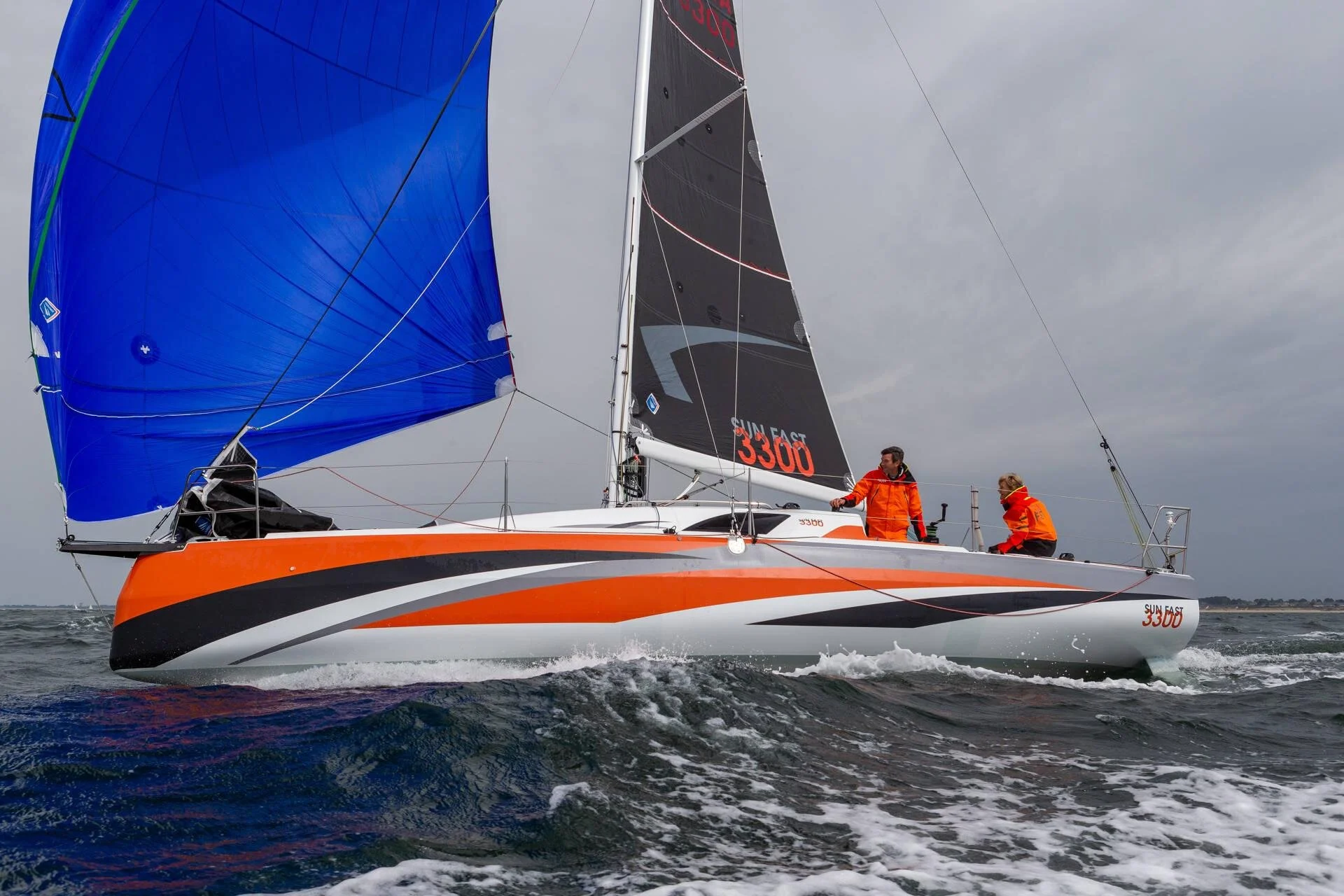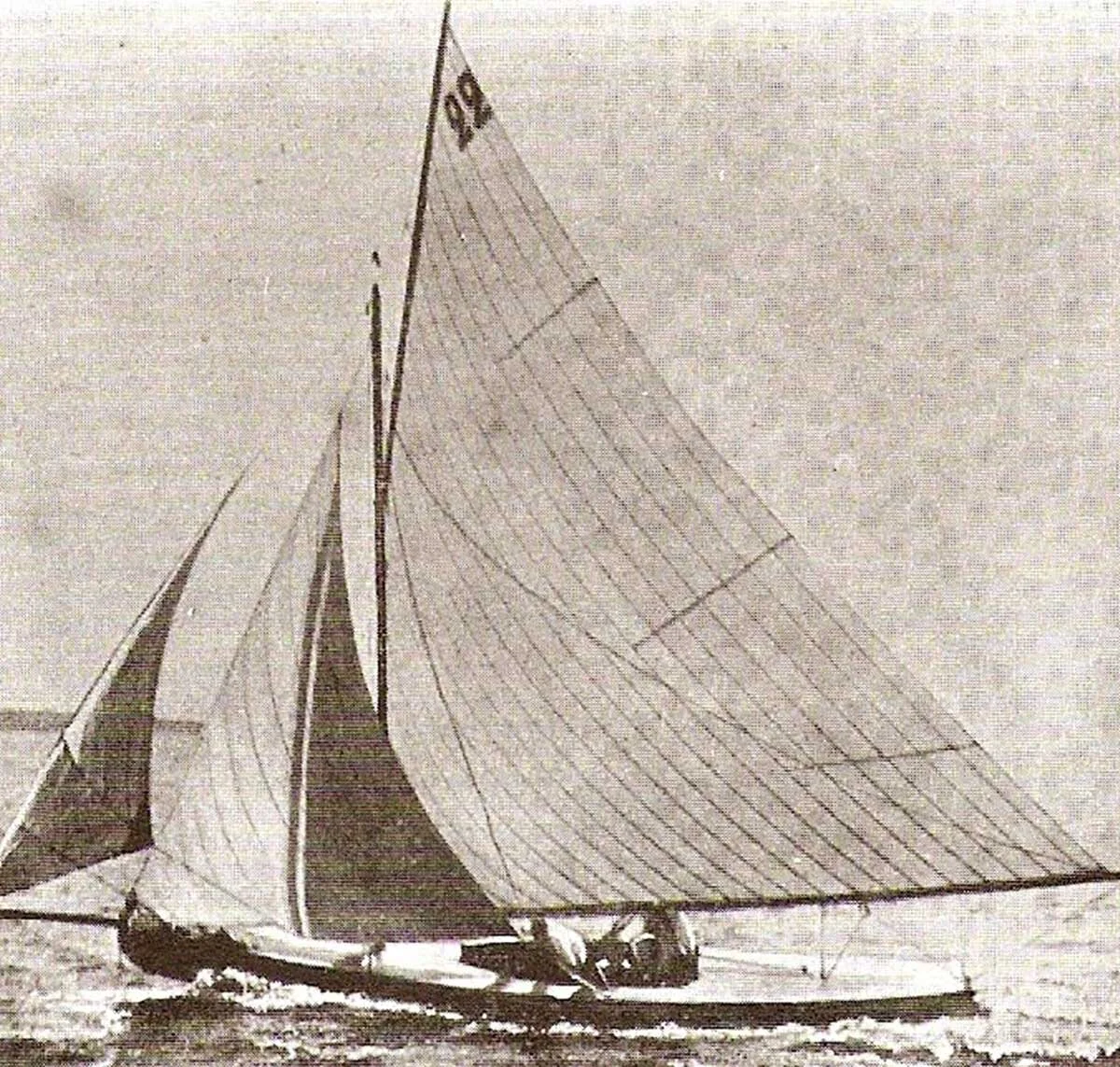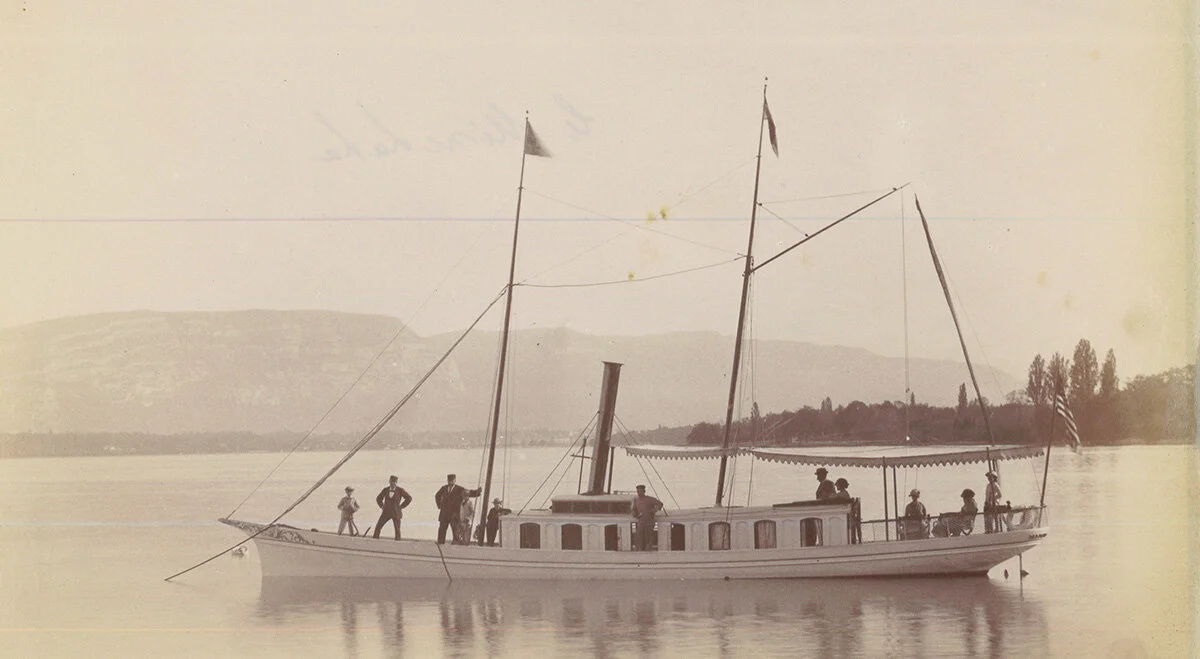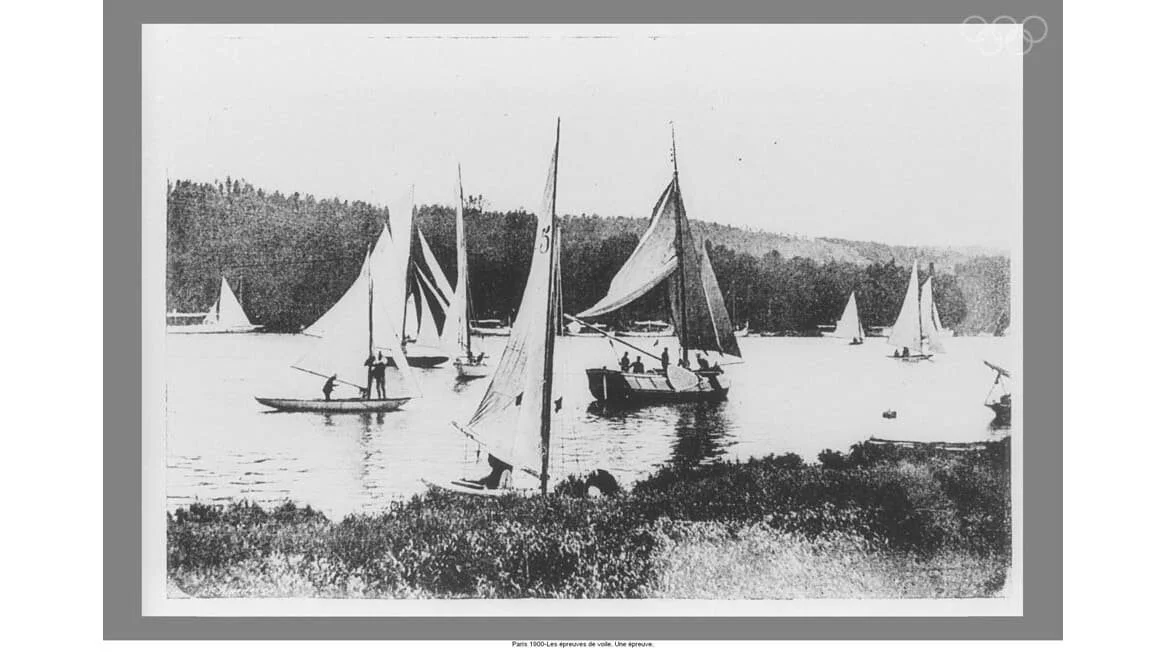Olympic Selection and Gender Politics
Countess Hélène de Pourtalès, was the first woman to win an Olympic gold medal, competing in the sailing at the 1900 Paris Games.
With the Enoshima Olympic regatta about wrapped, it’s a good time to review the politics flowing around international sailing and boat selection.
The IOC is constantly re-jigging its position on gender that bubbles under the surface of their sporting ideals. Since 1900, sailing was considered a gender neutral Olympic sport where male and female sailors could and did compete together. While women sailors have always participated in the regattas, they were outnumbered by male crews. This only changed in 1988 when the 470 class introduced separate competitions for women and men.
OLYMPIC POLITICS
The 1936 Berlin Olympiad was used as a demonstration of nationalism and allegiance to the Nazi party. The opening ceremony was a pre-curser to the infamous party rallies, beautifully filmed and photographed by Leni Riefenstahl. Munich 1972 is remembered for the tensile glass canopies of architect Frei Otto but more for the Palestinian Liberation Organisation’s hostage taking and killing of Israeli athletes, with the stand-off broadcast on live TV.
Japan has also had an uneven Olympic story. Apart from the pandemic delay of 2020, Tokyo was nominated to host in 1940. By 1938 construction was well underway with many sports venues completed. Britain and America threatened to boycott after the Japanese invasion of Manchuria so Tokyo returned its invitation to host, requesting postponement to 1944. The 1940 games were scrapped after Hitler invaded Poland and a 1944 olympiad was abandoned. Tokyo hosted successfully in 1964 where Bill Northam in Barranjoey won the 5.5m sailing gold.
The London “austerity games” in 1948 became problematic with London still a city living on rations and rubble. The Japanese signalled their intention to compete, but the British made it clear that Japan and Germany were not welcome.
The five Classes for the London 1948 Olympics
Apart from underlying public resentment, the Foreign Office advised that no peace treaty was ever signed with Japan so they were technically still at war. Johannes Edstrom, the Swedish president of the IOC pressed the Brits.
“I am surprised that you take this attitude three years after the war has ended. We men of sport ought to show the way for diplomats.”
OLYMPIC GENDER
Edstrom’s appeal to sport trumping politics did not extend to women. His committee determined that sailing events at the 1948 London Olympics, should only be open to male sailors. SWS cannot discover the reason for this somewhat unnecessary edict and welcomes any feedback.
40 years later in 1988, the first exclusive women's sailing event was introduced in the 470 dinghy. The trend continued with Australian Julian Bethwaite designing the 49er for men and 49erFX for women. This high performance skiff was introduced at Sydney 2000. Women’s classes were expanded further to match the men with the inclusion of the Laser Radial at Beijing 2008. The Radial is an identical boat except for a shortened mast and reduced sail area. Olympic sailing made the next step, becoming one of the first sports to introduce a compulsory mixed gender event in 2016 with the multihull Nacra 17.
It’s not just club racers who yell! Enoshima action in the 49erFX
After Rio de Janeiro, the International Olympic Committee sent virtuous signals and directives, demanding further equal participation events for men and women by Paris 2024. Tokyo 2020 will be last time we see the Finn dinghy, while the 470 class will become a compulsory mixed competition in 2024. In 2018 World Sailing proposed dropping the Finn, a men’s heavyweight single hander, in favour of a mixed double hander offshore keelboat event along with a mixed kiteboarding relay race. After several years of excitement amongst traditional sailors, the IOC in May 2021 ditched the mixed offshore keelboat event in favour of a mens and women’s kitesurfing competition.
OLYMPIC BOAT SELECTION
The Five Classes for the Melbourne 1956 Games
The Olympics are no doubt driven by funding from sales of TV rights. Gradually the keelboat classes like the Star, 5.5m, Dragon and Soling have all disappeared in favour of lightweight sport dinghies and windsurfers that provide close, short circuit racing suited to a television audience with short attention span. The final selections for Paris extend this trend, adding foiling windsurfers (iQFoil) and kitesurfing. On simple numbers, there are far more sailors, yachts and regattas competing in small keelboats than kitesurfers and kitesurfing competitions. The IOC came up with many objections including security, distances for broadcast and the class is not established and has no world championship. This could be cover for their concern that an offshore overnight keelboat competition has little TV appeal. However, after seeing “on-board” cameras well used during the 2020 Enoshima regatta, could suggest otherwise.
Even though the double hander boat was never nominated, there are many potential yachts already sailing in European and American regattas. Manufacturers were designing or adapting their double handed offshore yachts in anticipation of Paris 2024. The marketing brochures take care to show women helming, knowing selection will lead to a flood of worldwide orders. Possibles and probables include the Jeanneau Sunfast 3300, Beneteau Figaro3, J Boats J-88 and the Dehler 30od.
Jeanneau Sunfast 3300
Beneteau Figaro3
The Oceanic & Offshore Committee of World Sailing with Australian Chair, Matt Allen (S2H winner on ICHI BAN) and Vice Chair, Corinne Migraine (VP French Sailing Federation & Offshore Doubles Assoc.) are still lobbying the IOC to reinstate a mixed double-hander event to “represent the sailing that most sailors do around the world”. They may now need to wait for Long Beach Los Angeles 2028 or Brisbane 2032. World Sailing believes the class can be open, universal and not necessarily youth driven. Extracts from their presentation below are convincing and dance around all angles of inclusion. But we think they may have missed pitching a real TV opportunity;
“The double handed keelboat discipline is one of the least crew type-forming by age, weight, build and gender. Of all equipment types in sailing, it can be argued that this discipline allows the widest spread of weight and build, but of course favours youth, energy and fitness in addition to intelligence, skill, and experience.
“A wider skill set than in other double handed disciples is required since helming as well as most other functions like navigation will be shared.
“Keelboats meeting the criteria are widespread around the world, which will provide wide access to appropriate boats and fleets for use in training and qualifying. The fleet used at the Olympics will be provided by a manufacturer at no charge.
“Off Marseille during the Mediterranean summer, a 20 x 20Nm, near-coast area provides a better test of sailing skill than do areas farther offshore. Along the coast there are daily transitions of wind from night-time drainage breeze to late morning thermals, including frequent incursions of the synoptic wind. Competition in this challenging environment is ideal for a Mixed Two Person Offshore Event.
This feels like World Sailing’s 1970’s “World Series Cricket” moment. After years of upheaval, cricket now has a strong TV audience for long-form 5 day Test cricket and the short T20 format used by the Indian Premier League and Australian “Big-Bash”. With cameras potentially everywhere on a yacht, the risk and opportunity here is for the mixed offshore crews to become TV celebrities. The IOC can sell and promote TV rights to “On-board Big Brother & Big Sister”. With live-streaming we could follow sail changes, navigation, discussion (and arguments) about weather, tactics, meal preparation and the sailing reality of ablutions behind the genoa?
The World Sailing submission to the IOC concludes;
“The Olympic movement and World Sailing will be applauded for introducing this event at the 2024 Olympics in France, not only because France is the epicentre of offshore sailing, but also for the shared history of France, the Olympics, sailing and mixed gender participation. The 1900 Paris Olympics was the first time Olympic sailing took place with keelboats racing on the Seine at Meulan and on the sea at Le Havre. The first woman to compete and win a medal in the Olympics was in sailing at that event. Countess Hélène de Pourtalès of Switzerland (American born in New York as Helen Barbey) raced with her husband and his nephew on their boat Lérina, competing in the 9 fleet 1-2 ton class. From today’s perspective it was the first mixed gender performance”.
HELENE de POURTALES
At the 1900 Paris Olympics, representing Switzerland, Countess Hélène de Pourtalès and her husband Hermann, sailed their yacht LERINA and won a gold medal.
LERINA at Cannes 1900
Helene was born in New York as Helen Barbey. Her father, Henry Barbey was Swiss and made a fortune investing in railroads. Her mother, Mary Lorillard was heir to a tobacco empire. The Barbey family lived in New York and spent summers on Lake Geneva boating and sailing. Henry even shipped a steamer, the Minnehaha from America to Lake Geneva for the family to enjoy. In 1891, Helen married Hermann Alexandre, Count de Pourtalès and son of an old Huguenot family. She stipulated any husband must be a sailor and together they regularly competed on Lake Geneva and at Cannes where they also owned a villa.
MINNEHAHA on Lake Geneva circa late 19C
Her mothers family, the Lorillards were central figures in the Newport community, where the America’s Cup regattas were held. Hélène was considered a very experienced sailor, spending every summer sailing in Europe and training in Newport in the off-season. In one of her diaries, she describes in detail watching the 1887 America’s Cup.
In May 1900, aged 32 she was one of three crew of the yacht LERINA which won the first of two races in the 1-2 ton class. Three days later they placed in the second race. This made her the first woman to compete at the Olympics and the first female Olympic medallist.
Olympic Racing on the Seine in 1900









